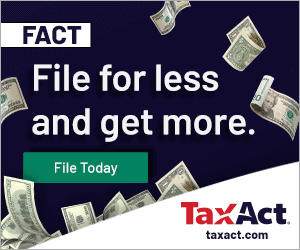7 Ways Investment Gains and Losses Affect Your Taxes


File your taxes online with confidence.
If you have substantial investment gains or other income this year, make sure you know how they will affect your taxes, and be prepared to deal with them.
If you have investment losses, on the other hand, you also need to know how your tax return may be impacted. You may want to change your strategy for the tax year, based on a significant loss or two.
Here are the most common ways investment gains, losses and other income affect your taxes, starting with those taxed at the highest rates:
1. Investment income taxed at ordinary income tax rates
If you have taxable interest, whether it’s from bonds or a savings account, you include the interest with your income and pay tax at ordinary income tax rates.
You also pay ordinary income tax rates on any short-term gains from investments. You don’t have to be a day trader to have short-term capital gains. If you sell any asset at a gain within one year or less, you generally must pay ordinary income tax rates on the resulting short-term gains.
2. Investment income from collectibles taxed at a special rate
Not all investments are in stocks, bonds and so on. Some people invest in what they love, such as art, antiques, and collectibles. They often do quite well on these investments.
The Internal Revenue Service (IRS) caps the tax rate for long-term gains from investments in collectibles at 28 percent. That means if you are in the 28 percent or higher tax bracket, your gain from the sale of collectibles is taxed at 28 percent. If you are in the 25 percent or lower tax bracket (that’s most of us), you pay your ordinary income tax rate on gains from collectibles.
3. Investment income taxed at reduced capital gains rates
Sometimes if you hang on to capital assets such as stocks, bonds, and investment real estate just a little longer, you can save a lot on taxes. Instead of paying your ordinary income tax rate, you pay a reduced capital gains rate on your profit. You’ll need to wait until you’ve owned the asset more than one year (one year and one day is fine).
Your capital gains rate is based on your income tax bracket. If you are near the threshold for a particular bracket, you may pay one rate on part of your capital gain, and another rate for the rest. TaxAct calculates your capital gains tax for you. Here are the capital gains rates, based on income tax bracket:
- If your regular tax rate would be 39.6 percent, your maximum capital gains rate is 20 percent.
- If your regular tax rate would be 25, 28, 33, or 35 percent, your maximum capital gains rate is 15 percent.
- If you’re in the 10 or 15 percent tax bracket for ordinary income, your maximum capital gains rate is 0 percent.
4. Dividend income taxed at a special rate
When you own stock, you own part of a company and are entitled to receive part of the profits. The corporation has already paid tax on the income, however. That’s why you, as a shareholder, get a reduced rate when the corporation passes on profits to you in the form of qualified dividends.
For most taxpayers, the tax rate on dividends is 15 percent. The maximum rates on dividends are the same as those for net capital gain.
5. Retirement account investment income
As long as you keep your money in a qualified retirement plan, you don’t have to pay current income tax on any investment gain or income. For some plans, the tax on gains is only deferred. When you eventually take the money out of the plan, usually at retirement, you pay tax on the gain and other returns.
With other plans, you never pay tax on the gains from your investment – if you follow all the rules.
For example, when you contribute to a Roth IRA, you don’t get a tax deduction for the contribution. When you withdraw the money in retirement, however, you don’t pay tax on either the amount you originally contributed or the return on your investment.
6. Tax-exempt investment income
Some investments offer tax-free interest income. These investments pay lower interest rates, which usually makes them a good idea for taxpayers in high income tax brackets.
If you buy U.S. Treasury Issues, you pay federal tax on interest, but you don’t have to pay state or local taxes on it.
Municipal bonds are a favorite investment for very high net worth taxpayers. Not only do you pay no taxes on them, but if you buy them in the state where you live, you also don’t have to pay state, federal or local taxes, either.
7. Investment losses
If you sell stock or other investment property at a loss, you can first use the loss to offset other capital gains during the year. If you have a remaining loss, you can use it to offset your wages and other income — but only up to $3,000 per year. You can carry any unused losses forward to future tax years.
Tax planning for investment gains and losses
If you expect to owe more tax this year, based on investment gains, you may need to make quarterly estimated tax payments to avoid tax penalties and interest. You can use TaxAct to estimate your tax bill for the year, and create estimated tax payment vouchers.
If your income last year was less than you expect it to be this year with the tax gain, the “safe harbor amount” rules may prevent you from owing a penalty for underpayment of estimated taxes.
However, when you have a gain, it’s a good idea to set aside an amount for taxes right away. It’s a lot easier to do it while you have the money at hand.
Alternatively, if you have an investment loss, you can sell assets that went up in value before the year ends. You can use the losses to offset gains in the same tax year.
If you have a loss up to $3,000 against your ordinary income, you can account for the the saved taxes. You can either reduce your income tax withholding or reduce your estimated tax payments.






